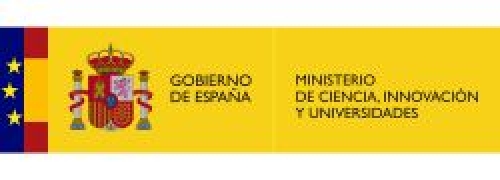
• The new technique, which was born from a study recently published in Genome Biology, allows the reversible tissue fixation followed by dissociation, ensuring RNA integrity and cellular composition while reducing-stress related artifacts.
• The method aims to promote collaborative research by allowing more flexible and decentralized study designs while enhancing the quality of samples used in basic research and clinical applications in the field of Single Cell Genomics.
• FixNCut is compatible with multiple Single Cell modalities and Spatial technologies.
May 7th, 2024. Single Cell Genomics has brought significant advancements in personalized medicine, mainly because researchers can study tissues, organs, and organisms at an unprecedented level of resolution and detail. However, most Single Cell techniques are designed for freshly collected samples, which can be a challenge for many studies. The main limitation we face today is preserving samples in large-scale projects, as it is not feasible to process all of them at the precise moment and place of collection, significantly impacting the quality of the samples. Despite the emergence of many preservation methods, such as paraformaldehyde or cryopreservation, we still lacked a standardized protocol that allows us both to preserve cellular state and cellular composition at the time of the sampling and compatible with multiple single-cell RNA-sequencing and spatial transcriptomics protocols.

To overcome these current limitations, the Centro Nacional de Análisis Genómico (CNAG) together Omniscope Inc. and the Adelaide Centre for Epigenetics (ACE) present FIXNCUT, a novel method published recently in Genome Biology, ensuring that samples are preserved with optimal quality, as if they were processed right after collection. The study, marks a significant breakthrough in single-cell field. The main authors of the study are from the Single Cell Genomics Group at CNAG, particularly their Group Leader Holger Heyn and the PhD Student Laura Jiménez-Gracia, along with Luciano G. Martelotto, Head of the Development Laboratory at ACE.
As the name of the new technique suggests (FixNCut), the first step involves the use of Lomant’s Reagent (DSP), to fixing the tissue biopsy, followed by sample digestion to disgregate (or cut) the tissue into individual cells. It is a simple yet highly effective process, because the DSP reagent allows to revert the initial tissue fixation, an essential step for Single Cell protocols. With this new method, the researchers can disconnect the sampling time and location from the following downstream processing steps, thus allowing robust, flexible and reproducible study designs specially critical in the clinical context.
According to Holger Heyn (PhD): “FixNCut is simple to implement in standard clinical study designs. It allows the collection of tissue and tumor specimen, without the need for immediate single-cell dissociation. I expect the implementation of FixNCut to boost the quality of clinical studies and to allow straightforward collaborations between translational and clinical research labs”.
The reversible properties of the DSP fixative, key to the new methodology
The workflow utilizes Lomant's Reagent, commonly known as DSP (dithiobis(succinimidyl propionate)), a chemical compound well-known in the scientific community for its ability to crosslink proteins. Up to now, DSP was previously applied to preserve cells in suspension for single-cell sequencing, but never employed in tissues prior to dissociation. The main innovation brought by this research is the utilization of the reversible properties of the DSP fixative with standard enzymatic tissue dissociation of solid tissues. Then, DSP crosslinking can be reverted via reducing agents, which are present in most reverse transcription buffers of single-cell sequencing applications.
Laura Jiménez-Gracia, first author of the study and FPU fellow, highlights: “FixNCut is a game-changer method in the field of single-cell genomics and spatial technologies. It enables the design of worldwide research and clinical studies, incorporating samples from various locations while centralizing data processing to mitigate the technical effects. Simultaneously, FixNCut opens avenues for studying highly sensitive human tissues, such as the pancreas, or more delicate organisms, from which obtaining highly-quality RNA was previously challenging”.
The new method is aimed at the scientific community, particularly hospitals, research centers, and corporations, enabling them to fix biopsies at the moment of sample acquisition ensuring high RNA quality and avoiding technical artifacts. This advancement will also foster collaboration in the sector, as samples can travel longer distances for centralized downstream processing.
FixNCut, applied to multiple research and clinical contexts
In the clinical context, the journey of a sample from its extraction to its arrival at the laboratory is often fraught with numerous variables that can potentially alter its essence and the results of its study. Factors such as waiting time, transportation conditions, temperature fluctuations, and the stress involved in tissue dissociation can all contribute to these alterations. This new method enables the elimination of external factors that induce stress in samples, altering their real transcriptomic state. Additionally, FixNCut can be used in combination with cryopreservation, allowing the separation of sampling time and location from downstream data generation, while preserving sample composition and gene expression profiles.
To test the potential of this technique, we applied FixNCut to samples of mouse lung and colon, as well as human colon biopsies from inflammatory bowel disease (IBD) patients, in collaboration with researchers from IDIBAPS and IRB research centers. The results confirmed that FixNCut method is able to conserve the RNA quality, the complexity of sequencing libraries, and the tissue cellular composition, while minimizing stress-related artifacts.
REFERENCE ARTICLE
Jiménez-Gracia, Laura, et al. ‘FixNCut: Single-Cell Genomics through Reversible Tissue Fixation and Dissociation’. Genome Biology, vol. 25, no. 1, Mar. 2024, p. 81. BioMed Central, https://doi.org/10.1186/s13059-024-03219-5.
PHOTO(authors of the study from CNAG)
From left to right: Holger Heyn (Single Cell Genomics Group Leader at CNAG), Juan Nieto (inmunologist of the Single Cell Genomics Group at CNAG), Laura Jiménez (FPU at CNAG), Ginevra Caratú (laboratory technician of the Single Cell Genomics Group at CNAG) and Ivo Gut (director of CNAG).
FUNDINGS
This project has received funding from the Innovative Medicines Initiative 2 Joint Undertaking (IMI 2 JU) under grant agreement No 831434 (3TR; Taxonomy, Targets, Treatment, and Remission). The JU receives support from the European Union’s Horizon 2020 research and innovation programme and EFPIA. Also, this project has received funding from the European Union’s H2020 research and innovation program under grant agreement No 848028 (DoCTIS; Decision On Optimal Combinatorial Therapies In Imids Using Systems Approaches).
The first author of the research, Laura Jiménez-Gracia, has held an Formación de Profesorado Universitario (FPU) PhD fellowship (FPU19/04886) from the Spanish Ministry of Universities.











